You are using an out of date browser. It may not display this or other websites correctly.
You should upgrade or use an alternative browser.
You should upgrade or use an alternative browser.
Indian Military News, Reports, Data, etc.
- Thread starter bd popeye
- Start date
Admiral RK Dhowan, Chief of the Indian Naval Staff, inaugurated a new state of the art "Very Low Frequency (VLF)" transmitting station at INS Kattaboman, Tirunelvelli, Tamil Nadu today.
This new facility would provide a boost to the Navy's ability to communicate with deployed ships and submarines on an uninterrupted basis throughout the year.
Also there would be another VLF station coming up in next 2-3 years in Ranga Reddy district of Telangana.
Now to the more important news...
India's first ever indigenous nuclear submarine Arihant, which is under construction at the naval ship building centre at Visakhapatnam, will be ready to serve the nation by 2017, naval sources said.
According to sources, the big vessel has already completed harbour trails and preparations are underway to conduct sea trails by the end of this year. "If everything goes as per plan, all the works pertaining to the nuclear submarine project will be completed in the next three years and the submarine will be ready for duty. There are sufficient funds for the project," said a naval source.
So we can expect the following(my assumption) ->
*Vessel to be out for sea trials once the monsoons are over.
*Then by early next year the sensors, communication systems' testing will take place.
*After this the weapon systems will be placed in and submarine's performance will be checked with full load
*Live firing tests would take place by end of next year, which will include multiple firing of K-15 SLBMs, Torpedos and Possibly a test of K-4 missile.
*If all the above trials are successful and no defects are found, then the navy can start developing some wartime tactics for the sub etc. Also We can expect the navy to pity the Arihant against the P-8I and Kamorta class ASW corvettes. It would be a great learning experience for the crew of each platform.
This new facility would provide a boost to the Navy's ability to communicate with deployed ships and submarines on an uninterrupted basis throughout the year.
Also there would be another VLF station coming up in next 2-3 years in Ranga Reddy district of Telangana.
Now to the more important news...
India's first ever indigenous nuclear submarine Arihant, which is under construction at the naval ship building centre at Visakhapatnam, will be ready to serve the nation by 2017, naval sources said.
According to sources, the big vessel has already completed harbour trails and preparations are underway to conduct sea trails by the end of this year. "If everything goes as per plan, all the works pertaining to the nuclear submarine project will be completed in the next three years and the submarine will be ready for duty. There are sufficient funds for the project," said a naval source.
So we can expect the following(my assumption) ->
*Vessel to be out for sea trials once the monsoons are over.
*Then by early next year the sensors, communication systems' testing will take place.
*After this the weapon systems will be placed in and submarine's performance will be checked with full load
*Live firing tests would take place by end of next year, which will include multiple firing of K-15 SLBMs, Torpedos and Possibly a test of K-4 missile.
*If all the above trials are successful and no defects are found, then the navy can start developing some wartime tactics for the sub etc. Also We can expect the navy to pity the Arihant against the P-8I and Kamorta class ASW corvettes. It would be a great learning experience for the crew of each platform.
India’s indigenous ASW Corvette built of steel made at ASP, Durgapur
Jayanta Gupta,TNN | Jul 12, 2014,
KOLKATA: On Saturday, when Rear Admiral (retd) A K Verma, chairman cum managing director, Garden Reach Shipbuilders and Engineers (GRSE) formally handed over the INS Kamorta to commissioning captain Commander Manoj Jha, history was created. Not only is the INS Kamorta the first ship of the Indian Navy with such high indigenous content, it also marked the day when India shed her dependency on imported high-grade steel to build warships. DMR249A, or the steel made at Alloy Steel Plant, Durgapur and further strengthened at the Bhilai Steel Plant, was used to build the anti-submarine warfare corvette.
"This was the first ship of the Kamorta class of ASW corvettes. These are very advanced vessels. GRSE is presently building the three other vessels of this class. All of them will be built using DMR249A. This was a great achievement for the country. Steel Authority of India Ltd (SAIL) has developed this steel and we will no longer have to depend on imports for naval shipbuilding that will certainly go up in the days to come. Even the hull of the INS Vikrant, India's indigenous aircraft carrier that is under construction, has been built with this steel. The flight deck of the aircraft carrier has been built using a superior quality steel that was also made at the Alloy Steel Plant," a senior defence ministry official said.
Till now, India has been primarily using Russian-made AB Steel for naval shipbuilding. With India aiming to turn into a 'Builders Navy' from a 'Buyers Navy', the country can't rely solely on imports to build ships, that too for something like steel which is required in bulk. The bulk of sensors and weapons systems on the INS Kamorta have also been supplied by Indian companies.
"Pricing is not the factor alone. One has to consider changes in the global political scenario. A time may come when sanctions are imposed and exports to India are banned by countries that now supply steel for shipbuilding. Employees at GRSE had to take special training in welding this steel. This quality of steel was first developed in ingot form at the Heavy Engineering Corporation in Ranchi as per specifications of the Defence Metallurgical Research Laboratory. At Durgapur, the steel was cast into plates. The aim is to build steel that is of superior quality to what we import. It was left to Bhilai to produce plates of 8-16 mm thickness without Quenching and Tempering (Q&T), through controlled rolling. Later, we started making plates of 18-20 mm thickness," the official added.
It took some doing but when DMR 249A was finally developed, it had superior qualities to imported steel. The steel can absorb an impact of 78 Joules at 60 degrees below zero. As temperature reduces, the steel actually becomes tougher. This will enable the ship to sail in arctic waters if the need arises.
Jayanta Gupta,TNN | Jul 12, 2014,
KOLKATA: On Saturday, when Rear Admiral (retd) A K Verma, chairman cum managing director, Garden Reach Shipbuilders and Engineers (GRSE) formally handed over the INS Kamorta to commissioning captain Commander Manoj Jha, history was created. Not only is the INS Kamorta the first ship of the Indian Navy with such high indigenous content, it also marked the day when India shed her dependency on imported high-grade steel to build warships. DMR249A, or the steel made at Alloy Steel Plant, Durgapur and further strengthened at the Bhilai Steel Plant, was used to build the anti-submarine warfare corvette.
"This was the first ship of the Kamorta class of ASW corvettes. These are very advanced vessels. GRSE is presently building the three other vessels of this class. All of them will be built using DMR249A. This was a great achievement for the country. Steel Authority of India Ltd (SAIL) has developed this steel and we will no longer have to depend on imports for naval shipbuilding that will certainly go up in the days to come. Even the hull of the INS Vikrant, India's indigenous aircraft carrier that is under construction, has been built with this steel. The flight deck of the aircraft carrier has been built using a superior quality steel that was also made at the Alloy Steel Plant," a senior defence ministry official said.
Till now, India has been primarily using Russian-made AB Steel for naval shipbuilding. With India aiming to turn into a 'Builders Navy' from a 'Buyers Navy', the country can't rely solely on imports to build ships, that too for something like steel which is required in bulk. The bulk of sensors and weapons systems on the INS Kamorta have also been supplied by Indian companies.
"Pricing is not the factor alone. One has to consider changes in the global political scenario. A time may come when sanctions are imposed and exports to India are banned by countries that now supply steel for shipbuilding. Employees at GRSE had to take special training in welding this steel. This quality of steel was first developed in ingot form at the Heavy Engineering Corporation in Ranchi as per specifications of the Defence Metallurgical Research Laboratory. At Durgapur, the steel was cast into plates. The aim is to build steel that is of superior quality to what we import. It was left to Bhilai to produce plates of 8-16 mm thickness without Quenching and Tempering (Q&T), through controlled rolling. Later, we started making plates of 18-20 mm thickness," the official added.
It took some doing but when DMR 249A was finally developed, it had superior qualities to imported steel. The steel can absorb an impact of 78 Joules at 60 degrees below zero. As temperature reduces, the steel actually becomes tougher. This will enable the ship to sail in arctic waters if the need arises.
Indian Navy Wants To Fast-Track Purchase of Russian Subs


NEW DELHI — The Indian Defence Ministry’s delay in floating a tender for six conventional submarines appears to be helping Russia, as the Indian Navy is now asking the MoD to buy two Russian-built Amur-class subs to help restock the shrinking force.
The $12 billion global tender would cover the purchase of six conventional submarines with air independent propulsion (AIP) technology under the Indian Navy’s Project 75-I.
A high-level team from Rosoboronexport was in New Delhi two weeks ago to negotiate the sale or lease of two Amur-class subs, said a source in MoD who gave no details of the deliberations.
The Indian Navy also plans to build six conventional Scorpene submarines under license by DCNS of France at Mumbai-based Mazagon Docks. The delivery of those submarines has been delayed by more than four years. The first of the six submarines will now be inducted into the Navy by 2016 compared with the original delivery date of 2012.
“The delay in Scorpene delivery as well as the delay in [the 75-I] submarine project has led to extreme depletion of [the] submarine arm,” said retired Indian Navy Capt. Shyam Kumar Singh. “The next new submarine will be ready to join the fleet only in 2018. Therefore the earnest need to procure the submarines from Russia.”
Russia leased the nuclear submarine Chakra in 1984, the only country to lease a nuclear submarine to India.
The Indian Navy operates seven Russian-made Kilo-class and four German-made SSK submarines, the last of which joined service in the late 1990s.
In the past year, three Kilo-class submarines were unavailable due to accidents and delays by the state-run shipyard at Vizag.
Though the Navy has asked the MoD to negotiate the purchase of two Amur subs, there is a difference of opinion among service officials about whether to buy Russian or Western-built vessels.
One faction favors the Russian-made AIP submarines, finding them more safe and robust while another group, mostly younger, prefers Western submarines based on a better score in electronics, control and sensors.
“Russian submarines are cheaper to maintain as the Indian Navy has invested heavily in creating relevant infrastructure to support the boats,” a senior Navy officer said. “Besides, there is adequate training on Russian submarines.”
Another officer rebutted: “While the Russian submarines are cheaper to buy initially, their support is expensive and has become an issue with the Indian Navy. While the French and the Western submarines are easier to maintain there are issues of transfer of technology of critical systems.”
While the Navy is facing depleting submarine fleet strength, there is uncertainty over the floating of the $12 billion tender under Project 75-I, now delayed by more than four years. The MoD has not given a reason for the delay in floating the tender.
“The project will not be scrapped,” Singh said. “However, the initial specifications were drawn sometime in 2006-07. It has already been eight years since then. Even if the tender is floated now, it will take at least 10 years for the first submarine to be built at the fastest and [it will be] outdated. The chances are that the specification may be changed. This could be the reason for delay in floating the formal tender.”
The overseas defense shipyards that have shown interest in Project 75-I include DCNS, for its Scorpene with AIP system; HDW of Germany with its Type 214 with Siemens Fuel Cell AIP submarine; Russia with its Amur-class submarine; and Fincantieri of Italy with its S-1000 submarine.
The strength of the Indian Navy submarine fleet has dwindled from a total of 21 vessels in the 1980s to 14. Yet China has more than 60 boats, a point of major concern to the Indian Navy, an official said
India bought 10 Russian Kilo subs, not seven.Indian Navy Wants To Fast-Track Purchase of Russian Subs
"The Indian Navy operates seven Russian-made Kilo-class and four German-made SSK submarines, the last of which joined service in the late 1990s."
INS Sindhughosh (S55)
INS Sindhudhvaj (S56)
INS Sindhuraj (S57)
INS Sindhuvir (S58)
INS Sindhuratna (S59)
INS Sindhukesari (S60)
INS Sindhukirti (S61)
INS Sindhuvijay (S62)
INS Sindhurakshak (S63)
INS Sindhushastra (S65)
Sindhurakshak (S63) sank and was recently raised, but I do not believe it will ever be rebuilt. Sindhughosh (S61) is in a refit which has taken a lot longer that they thought, but is expected to be in service in 2015. So, India still operates nine of the Kilos...not seven. And the last Kilo joined the Indian Navy in 2000, not 1991. The last German boat was commissioned in 1994.
Some inaccuracies in that article.
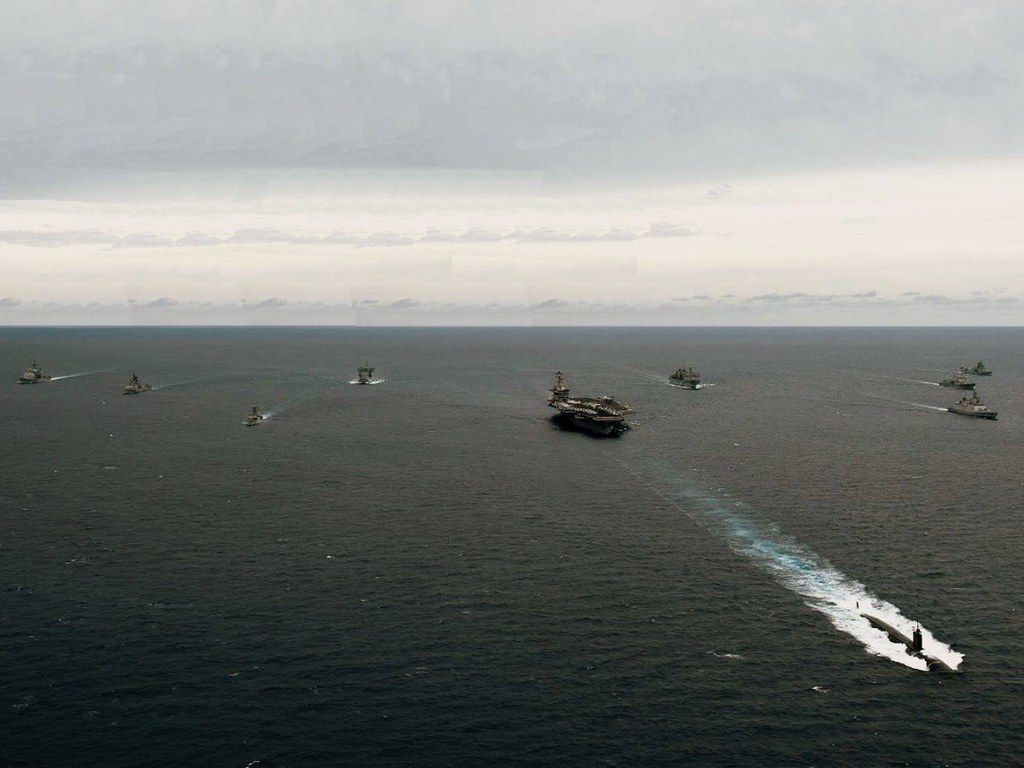
USS George Washington and a nuclear attack submarine lead Malabar 2014 participants
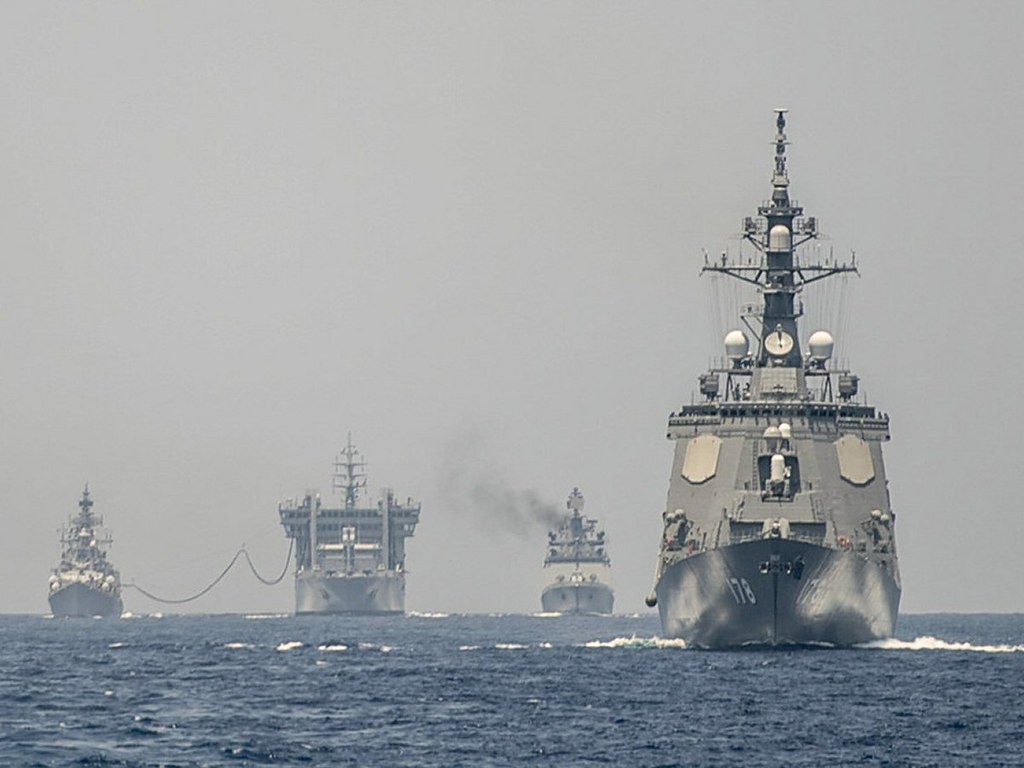
Japanese Ashigara, DDG-178, guided missile destroyer with Indian participants performing UNREP in background
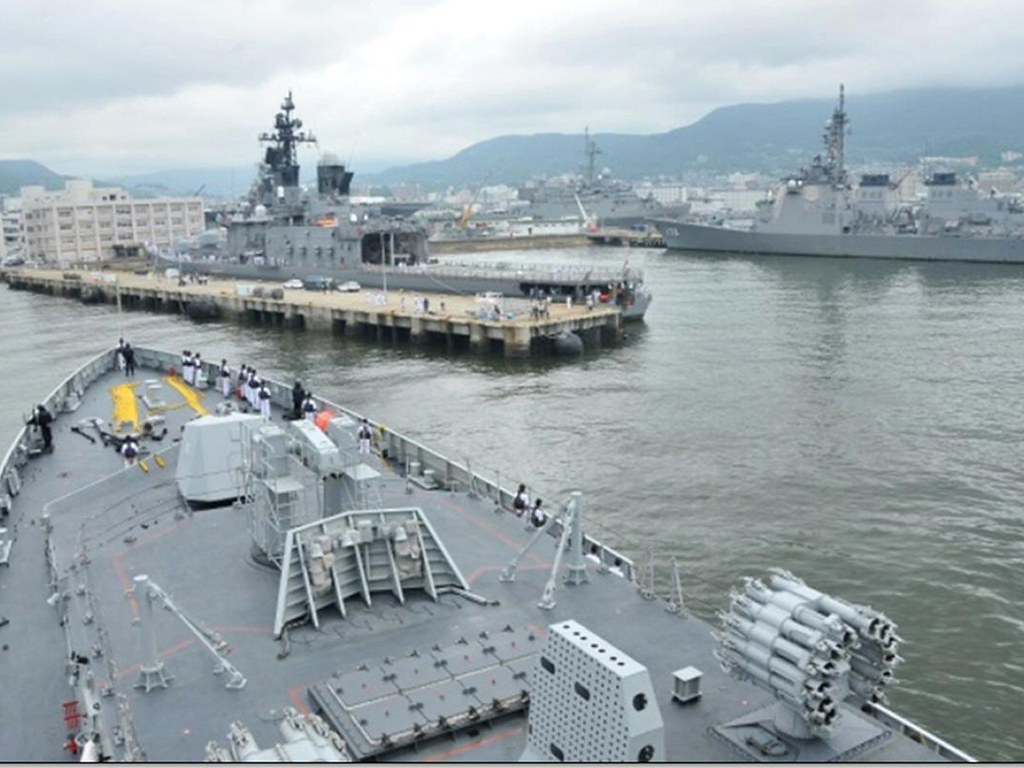
US, Indian, and Japanese vessels in harbor at Port Sasbo, Japan before the start of exercises.

Indian frigate Shivalik arrives inside harbor at Port Sasbo, Japan before the start of exercises.
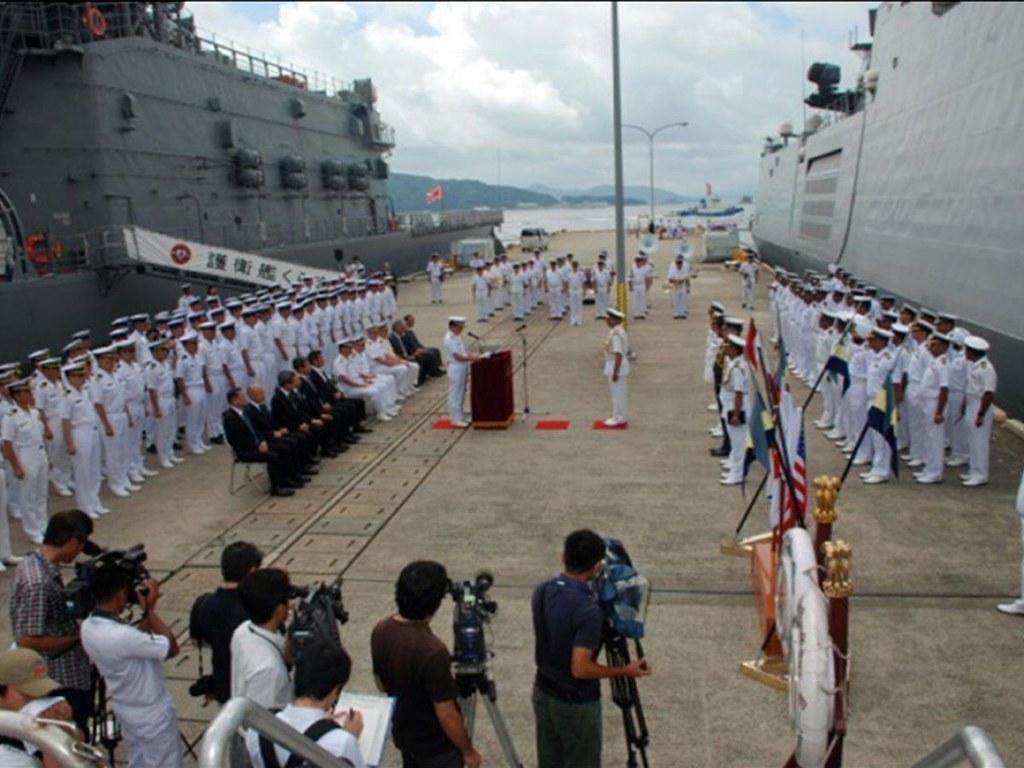
Multi-national naval personnel preparing for Malabar 2014 at-sea exercises.
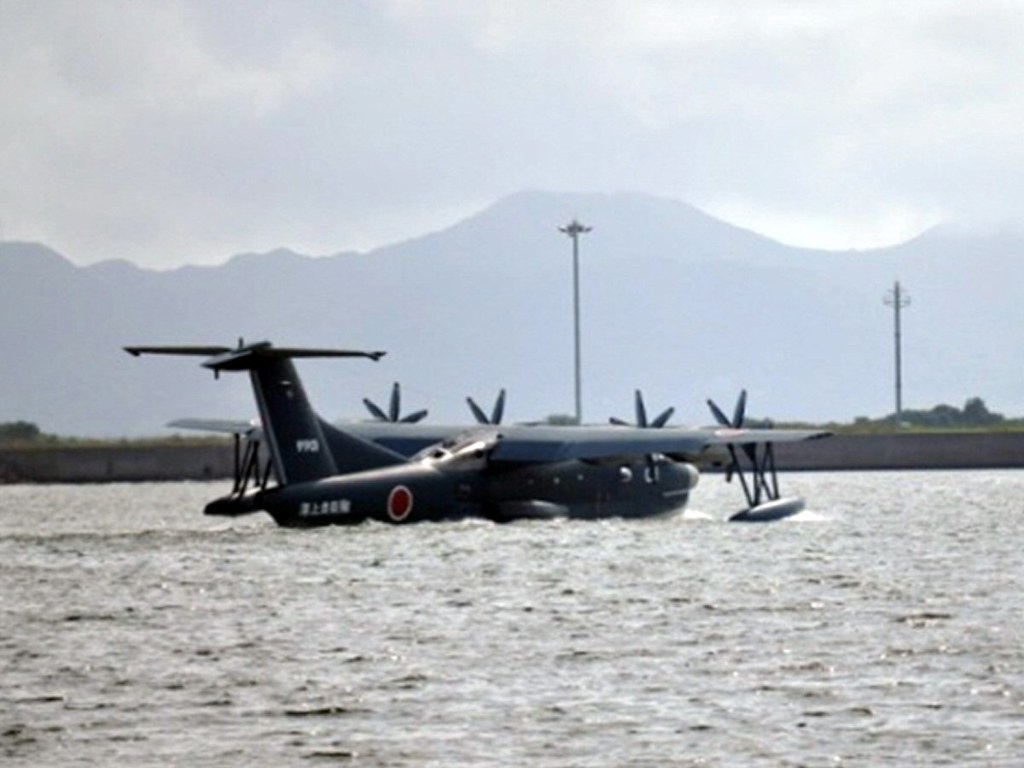
Japan Naval Sea Plane (US 2) inside harbor at Port Sasbo, Japan before the start of exercises.
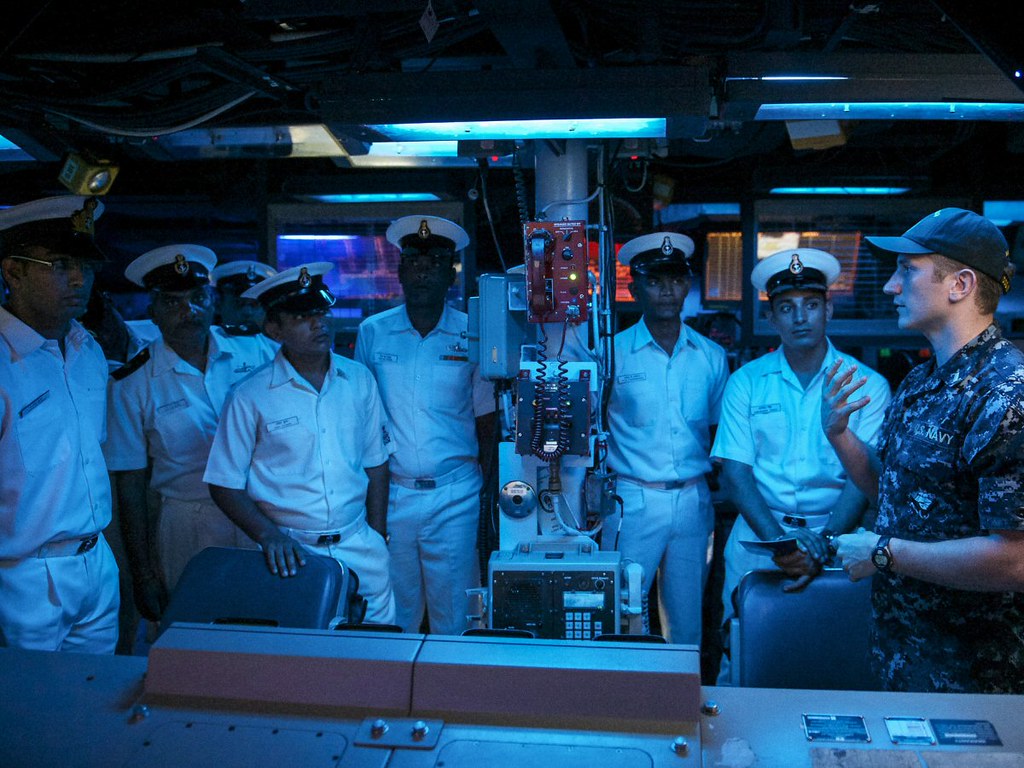
Participants tour one another's vessels, receiving explanation from personnel
Malabar 2014 said:Malabar is a multi-national naval exercise involving the United States and India. Participation has been expanded to include Japan, Australia and/or Singapore as conditions and schedule permit. The exercises have been ongoing since 1992 and are historically held in the Indian Ocean or off the islands of Japan.
Malabar 2014 featured US, Japanese and Indian vessels in wide ranging naval exercises. They included Carrier strike group operations, Maritime patrol and Reconnaissance operations, anti piracy operations and Visit, board, search, and seizure (VBSS) operations, Search and rescue exercises, helicopter cross-deck landings, Underway replenishment, gunnery and anti-submarine warfare exercises, and Liaison officer exchange and embarkation. The exercises this year centered at Sasebo Naval Base, Japan, and the at sea portion was held off of southern Japan.
In 2014, the Indian assets participating included INS Ranvijay (Rajput guided missile destroyer), INS Shivalik (Shivalik stealth frigate) and INS Shakti (fleet tanker). The Japanese assets included the JS Ashigara (Atago class guided missile destroyer), the JS Kurama (Shirane class helicopter destroyer), a P3C Orion maritime patrol aircraft and a ShinMaywa US-2 maritime patrol float plane. The US assets included the USS George Washington (Nimitz class nuclear aircraft carrier) with embarked carrier Air Wing 5; the guided-missile cruiser USS Shiloh (Ticonderoga class AEGIS cruiser); the guided-missile destroyers USS John S. McCain, USS Stethem, and USS Pinckney (Burke class AEGIS destroyers); along with a P-3C Orion aircraft and a nuclear powered attack submarine (SSN).
US Navy Captain Shan M. Byrne explained that, "throughout the Indian and Pacific Oceans the U.S. 7th Fleet and its allies, Japan and partner India, maintain a consistent presence; it's absolutely critical that we train together and build our maritime partnership and understanding."
Indian Navy Wants To Fast-Track Purchase of Russian Subs

Arr... seriously ? Navy wants to buy Amur class subs as a stop gap ?
They want to buy a submarine which still exists on papers, the submarine from which it was developed had severe design issues, its equipments, mainly AIP propulsion, is untested [Even Russians are now buying the improved Kilo until the new Kalina class submarines with IHD-AIP are ready].
Either this news is fake or the heavy Russian Lobby has done a great work.
IN should have bought the Scorpene directly from DCNS as a stop gap or can still buy more mordern Type 214 from the Germans which are a far better options than the Amur.
I have similar thoughts and concerns.Arr... seriously ? Navy wants to buy Amur class subs as a stop gap ?
They want to buy a submarine which still exists on papers, the submarine from which it was developed had severe design issues, its equipments, mainly AIP propulsion, is untested [Even Russians are now buying the improved Kilo until the new Kalina class submarines with IHD-AIP are ready].
Either this news is fake or the heavy Russian Lobby has done a great work.
IN should have bought the Scorpene directly from DCNS as a stop gap or can still buy more mordern Type 214 from the Germans which are a far better options than the Amur.
The French and Germans have very good designs.
But, I think they want to have something similar to all of those Kilos for a stop gap.
If I were India, I would take a page out of the Australian book and at least discuss a deal with the Japanese. I believe the Japanese are anxious to make money from military sales and their Soryu sub is a world class AIP sub. As good as any other out there IMHO.
I bet they would work technology transfer and license build provisions out with the Indians...particularly if the Indians were interested in something more long term than a "stop gap."
But, I think they want to have something similar to all of those Kilos for a stop gap.
Jeff, yet again the Amur still only exists on paper. If they really want something similar to a Kilo, why not buy the improved Kilo itself ?
Improved Kilo class submarines are based on a tried and tested platform, and are already in production, thereby will be delivered even faster.
If I were India, I would take a page out of the Australian book and at least discuss a deal with the Japanese. I believe the Japanese are anxious to make money from military sales and their Soryu sub is a world class AIP sub. As good as any other out there IMHO.
I bet they would work technology transfer and license build provisions out with the Indians...particularly if the Indians were interested in something more long term than a "stop gap."
Jeff, Soryu deal will be unlikely. The AIP used in Soryu are themselves licensed produced in Japan. Indian Navy will avoid such three party deals.
It looks like Indian Navy is looking for a Fuel Cell based AIP system in their submarines. So my best bet would be a heavily modified Type 214 [Like the Type 218SG] or the Spanish S-80 [Which has a better AIP overall].
The Fuel Cell based AIP are overall better than the Kockum's Stirling engines.
MESMA is an old tech so are the CCDs.















